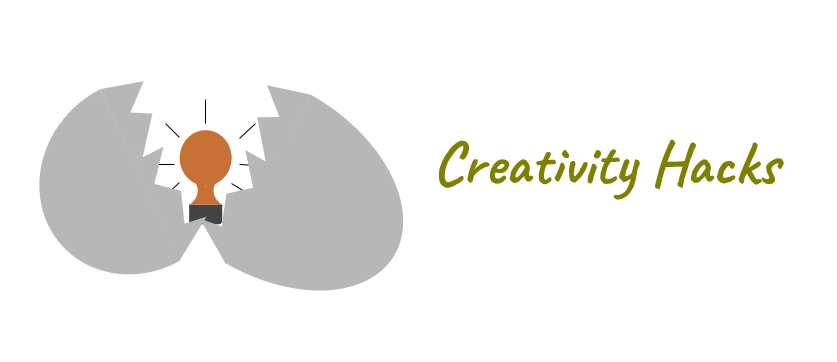Reframing a problem is an effective way to come up with new ways to solve the problem. However, many times people end up rewording the problem instead of reframing it in a broader context. At a cognitive level, reframing is related to abstract thinking which underlies creative and complex problem solving. Abstract thinking allows one to get to the essence of a problem.
About The Hack
To reframe, find the higher level of abstraction of a problem or an activity. A higher order abstraction typically fits the pattern “[description] by [activity]” while a lower level of abstraction fits the pattern “[activity] by [description]”. For instance, if the activity is ‘reading a book’, a high-level description could be ‘relaxing’ (“I [relax] by [reading a book]”) while a low-level description could be ‘flipping pages’ (“I [read a book] by [flipping pages]”).
As a real word example, what if your challenge was to improve the coffee experience? Without trying to reframe the problem one might be tempted to focus on the quality of the coffee beans or new blends that might appeal better to customers. And in fact, this was the direction Starbucks was taking till Howard Schultz, who later became the CEO, went to Milan on a buying trip for the company.
In Milan, Schultz got deeply inspired by the vibrant coffee culture. Espresso bars with trained baristas making cappuccino and other drinks from high quality arabica beans were everywhere. People met at these local espresso bars to connect with their friends or to discuss various issues. The social experience and the sense of community was so entwined with coffee as a drink. Schultz’s determination to bring that vibe and culture to the US led to the explosive growth of Starbucks. While Schlutz didn’t deliberately use reframing, the fortuitous trip became a catalyst for him to take the broader view and realize that people “socialize by drinking coffee”.
While a higher level of abstraction can open up new avenues of thinking and more transformational ideas, lower levels of abstraction are also useful. They can help identify incremental improvements that might also be useful to implement.
Summary
Finally, here is a quick summary of the creativity hack and how to use it.
| Description | Reframing challenges can open up new possibilities and lead to more transformational ideas. Reframing isn’t about rearticulating the problem. Instead it involves moving to a higher (more general) level of abstraction. To reframe the problem, cast it in the form “[description] by [activity]”. |
| Example | Suppose your challenge is to improve libraries and encourage people to read more. A higher level of abstraction could be “I get intellectual stimulation by reading ”. By focusing on intellectual stimulation, you might get a different set of ideas — book clubs, puzzle nights — which can be used to attract more people to the library. |
| Tips | – A higher level abstraction corresponds to “why” while a lower level abstraction corresponds to “how” – A common mistake is to change the goal and/or the subject while reframing. For example, deciding what product to build for the customer might start with what the customer is trying to achieve but end with “to make money for my company” which is an incorrect reframing. |
| Extensions | This technique can be used in reverse to find lower levels of abstraction, by casting it in the form “[activity] by [description]”. That typically leads to incremental or improvement ideas which are also beneficial. |


